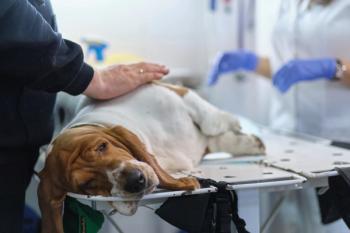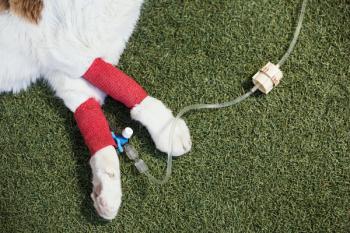
Take small steps to help curb pet obesity, expert says
Obesity is considered an epidemic in this country. And pets certainly aren't immune. An estimated 35 percent of adult cats are considered overweight. DVM Newsmagazine recently asked Dr. Tony Buffington, an animal nutritionist at The Ohio State University College of Veterinary Medicine, to offer some pet weight-loss advice.
Obesity is considered an epidemic in this country. And pets certainly aren't immune. An estimated 35 percent of adult cats are considered overweight. DVM Newsmagazine recently asked Dr. Tony Buffington, an animal nutritionist at The Ohio State University College of Veterinary Medicine, to offer some pet weight-loss advice.
DVM: How can veterinarians make inroads with adherence as it relates to obesity management?
A: Making sure the diet plan fits into the owner's life is important, or it is unlikely the plan will be followed. Considering people follow through with about 50 percent of goals for themselves, veterinarians shouldn't be too down on themselves about their compliance success. Ask owners if they remember what their pet's weight was at this time last year. If they say it was significantly less, read their body language to determine if they want to discuss the matter further. If it looks like they do not want to talk about it, explain the risks of obesity and let them know you and the staff are prepared to answer any questions they might have. If the client does want to discuss the matter, find a plan that will work for them.
There is nothing magical about reducing pets' weight. It's basically decreased stress, increased exercise and decreased food intake.
DVM: What are health risks related to obesity?
A: Obesity in dogs and cats is like driving without a seatbelt. If you never hit anything, there's no problem. But when you do, there's a big problem. When obese pets develop joint problems, they are more severe. Surgical procedures and disease can be complicated by excess weight as well.
Veterinarians who help owners get 10 percent of the weight off should consider it a success.
DVM: What are the key ingredients to a successful weight-loss program?
A: Ask owners to increase their pet's activity; just get the animal moving around. The word exercise can scare people.
Weight loss at 1 percent a month is reasonable. If owners simply cut a pet's food intake by 50 percent, a lot of begging will occur, and the program is likely not going to work.
I am not a fan of mixing foods. I recommend owners analyze the stress in the environment. Stress can cause pets to increase food intake. There are at least a dozen causes of obesity, therefore no single magic bullet can cure everyone.
Reducing the stress is a start and reducing the amount being fed gradually while increasing activity. The plan can be manipulated to fit each owner's schedule and needs. Focus on how well a pet lives instead of longevity.
Newsletter
From exam room tips to practice management insights, get trusted veterinary news delivered straight to your inbox—subscribe to dvm360.




